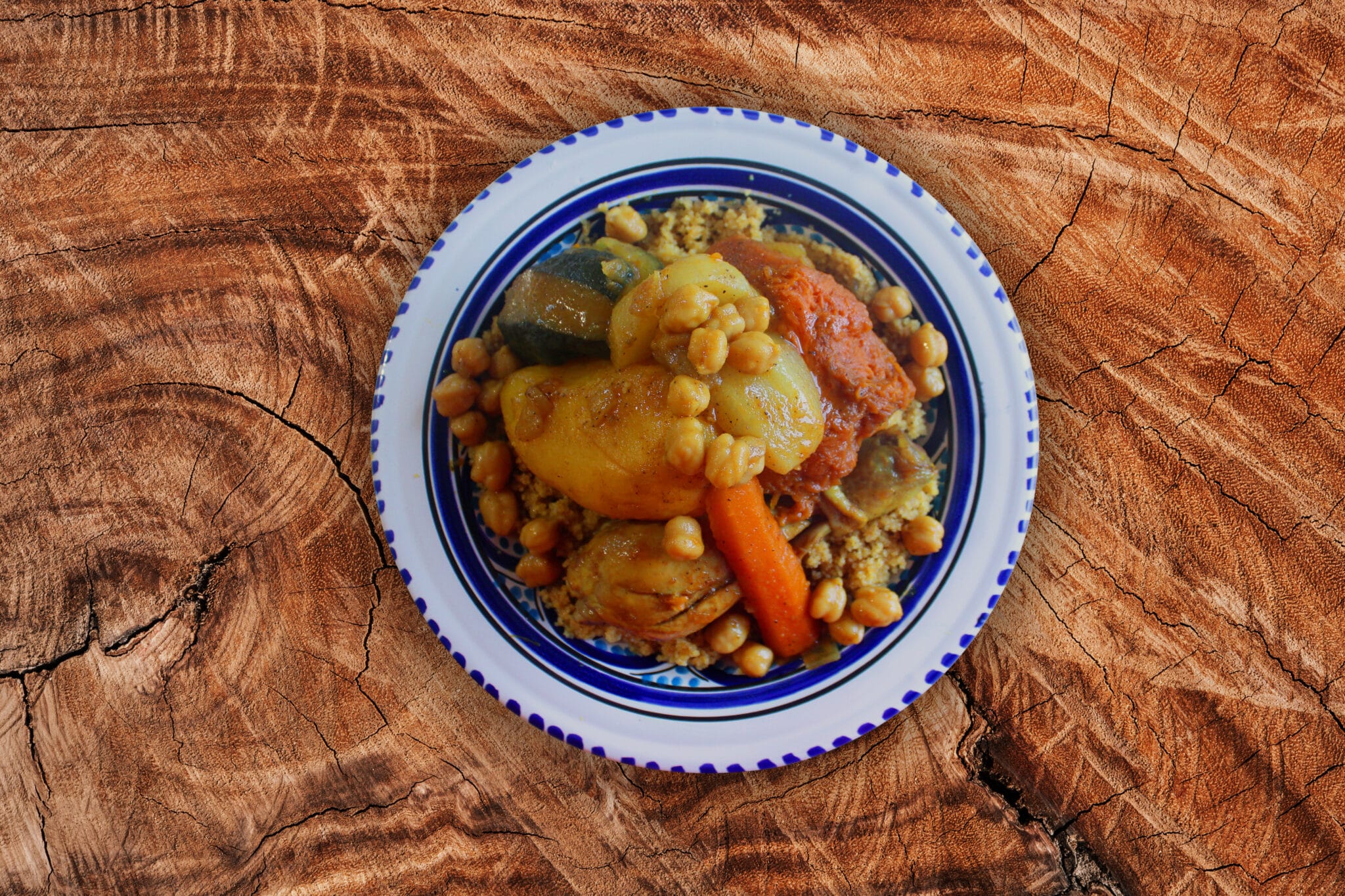
Couscous, a staple food known for its versatility and cultural significance, is the national dish of Tunisia. This humble grain has been nourishing Tunisians for centuries, playing an integral role in their culinary traditions.
Our team at Remitly created this guide as part of our series that celebrates the traditional foods of our global customers.
The History of Couscous in Tunisia
Couscous has deep roots in Tunisia. Historians believe it originated from the Berber people around the 7th century. It was a practical dish—easy to prepare and store, making it ideal for nomadic lifestyles.
Over time, couscous became ingrained in Tunisian culture. Its popularity spread across North Africa and into Mediterranean countries. Today, it’s acknowledged as one of Tunisia’s most cherished dishes.
Ingredients and Preparation
Tunisian couscous is often served with vegetables, meat, or fish. The ingredients vary by region but typically include carrots, turnips, zucchini, and chickpeas. Lamb or chicken are common meats used while coastal areas favor fish or grilled octopus. Some regions add heat with harissa—a fiery chili paste—or complexity with preserved lemons and olives.
The preparation involves steaming the couscous grains over a simmering stew. This method infuses the grains with flavor from the stew below while keeping them light and fluffy—a hallmark of well-made couscous.
Recipe for Tunisian Couscous
Tunisian couscous is a flavorful, hearty dish that’s perfect for sharing with family and friends. Here’s a simple recipe to help you bring the taste of Tunisia into your home.
Ingredients
- 2 cups of couscous
- 1 large onion, chopped
- 3 cloves of garlic, minced
- 2 carrots, peeled and sliced
- 2 turnips, peeled and cubed
- 1 zucchini, sliced
- 1 cup of chickpeas (soaked overnight if using dried)
- 500g lamb or chicken, cut into chunks
- Salt and pepper to taste
- A pinch of saffron threads
- 1 teaspoon coriander powder
- Half teaspoon caraway seeds
- Olive oil
Instructions
- Heat olive oil in a large pot over medium heat. Add onions and garlic—cook until softened.
- Add meat to the pot. Season with salt, pepper, saffron threads, coriander powder and caraway seeds. Cook until browned on all sides.
- Add carrots, turnips, and chickpeas to the pot—stir well.
- Cover ingredients with water—bring to a boil then reduce heat to simmer.
- In a separate pot or couscoussier top section, add couscous grains—steam over simmering stew for about 20 minutes.
- Remove from heat—fluff grains with a fork.
- Once vegetables are tender and meat is cooked through in the stew pot—add zucchini slices last as they cook quickly.
- To serve: mound steamed couscous on a large platter—surround it with vegetables and meat from the stew.
Couscous in Tunisian Celebrations
Couscous plays a central role in many Tunisian celebrations—it’s more than just food; it’s a symbol of hospitality and shared community values. During weddings, religious holidays or family gatherings, a large dish of couscous is often at the heart of the feast.
It’s not uncommon for Tunisians to prepare couscous as an act of charity during religious observances. This tradition underscores the importance of community and generosity in Tunisian culture.
In Tunisia, couscous is traditionally served family-style. A large platter holds the steamed grains, surrounded by vegetables and meat or fish. Diners help themselves, often using bread to scoop up the flavorful mix.
This communal way of eating reinforces social bonds and reflects the warm, hospitable nature of Tunisian culture. It’s a meal that invites conversation, shared experiences, and a sense of belonging.
Making Tunisian Couscous at Home
Making Tunisian couscous at home can be a rewarding experience. While it requires some time and patience, the result is worth it—a deliciously fragrant dish that feeds both body and soul.
You’ll need traditional ingredients like semolina grains, vegetables, meat, or fish—and don’t forget spices like coriander and caraway for authentic flavor. With practice, you’ll master this iconic dish—bringing a taste of Tunisia into your kitchen.
The Broader Cuisine of Tunisia
Tunisian cuisine is rich in flavors—it reflects the country’s diverse cultural history. Influences from Berber, Arab, Turkish, and French cuisines have shaped its culinary landscape.
Key Ingredients in Tunisian Cuisine
Tunisian cuisine is known for its bold flavors and use of fresh, local ingredients. Olive oil, tomatoes, garlic, and spices like coriander and caraway are common. Harissa—a fiery chili paste—is a staple condiment.
Seafood is abundant along the coast—tuna, sardines, and octopus feature prominently in dishes. Inland areas favor lamb or beef—often slow-cooked in stews or tagines.
Popular Tunisian Dishes
Beyond couscous, Tunisia offers various dishes worth exploring. Brik—a thin pastry filled with egg, tuna, and capers—is a popular appetizer. Lablabi—a chickpea soup flavored with cumin and harissa—is a comforting dish often eaten for breakfast.
For dessert, try Makroud—semolina cookies filled with dates and soaked in honey—or Assida—a sweet porridge made from wheat flour served during celebrations.
Visit the homepage, download our app, or check out our Help Center to get started.